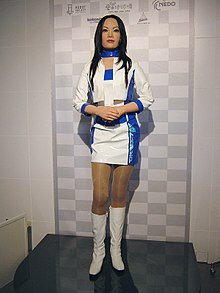
A gynoid, or robot designed to resemble a woman, can appear comforting to some people and disturbing to others
Robotic characters, androids (artificial men/women) or gynoids (artificial women), and cyborgs (also "bionic men/women", or humans with significant mechanical enhancements) have become a staple of science fiction.
The first reference in Western literature to mechanical servants appears in Homer's Iliad. In Book XVIII, Hephaestus, god of fire, creates new armor for the hero Achilles, assisted by robots. According to the Rieu translation, "Golden maidservants hastened to help their master. They looked like real women and could not only speak and use their limbs but were endowed with intelligence and trained in handwork by the immortal gods." Of course, the words "robot" or "android" are not used to describe them, but they are nevertheless mechanical devices human in appearance. "The first use of the word Robot was in Karel Čapek's play R.U.R. (Rossum's Universal Robots) (written in 1920)" Robots in literature
The most prolific author of stories about robots was Isaac Asimov (1920–1992), who placed robots and their interaction with society at the center of many of his works. Asimov carefully considered the problem of the ideal set of instructions robots might be given in order to lower the risk to humans, and arrived at his Three Laws of Robotics: a robot may not injure a human being or, through inaction, allow a human being to come to harm; a robot must obey orders given to it by human beings, except where such orders would conflict with the First Law; and a robot must protect its own existence as long as such protection does not conflict with the First or Second Law. These were introduced in his 1942 short story "Runaround", although foreshadowed in a few earlier stories. Later, Asimov added the Zeroth Law: "A robot may not harm humanity, or, by inaction, allow humanity to come to harm"; the rest of the laws are modified sequentially to acknowledge this.
According to the Oxford English Dictionary, the first passage in Asimov's short story "Liar!" (1941) that mentions the First Law is the earliest recorded use of the word robotics. Asimov was not initially aware of this; he assumed the word already existed by analogy with mechanics, hydraulics, and other similar terms denoting branches of applied knowledge.
0 comments:
Post a Comment